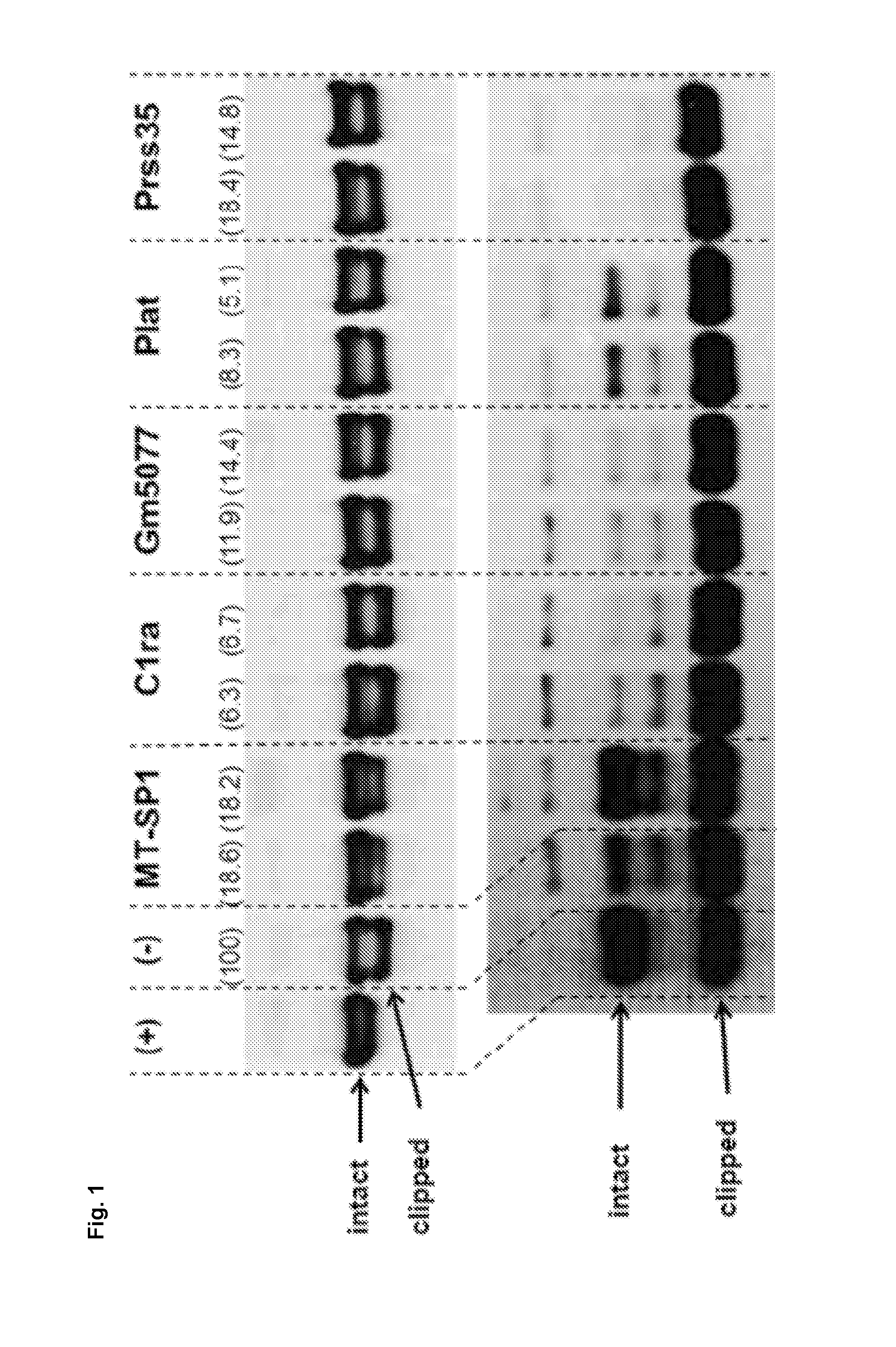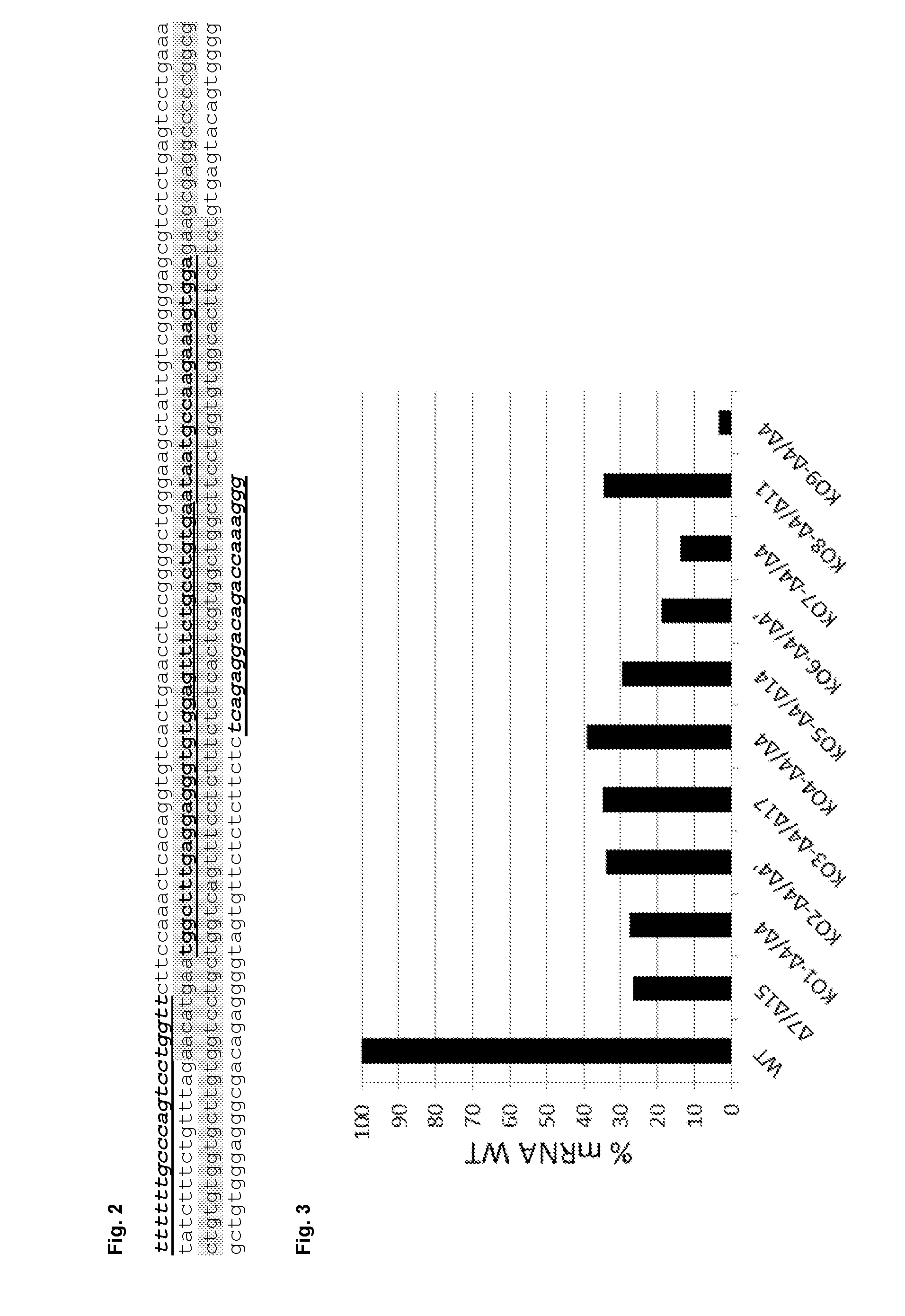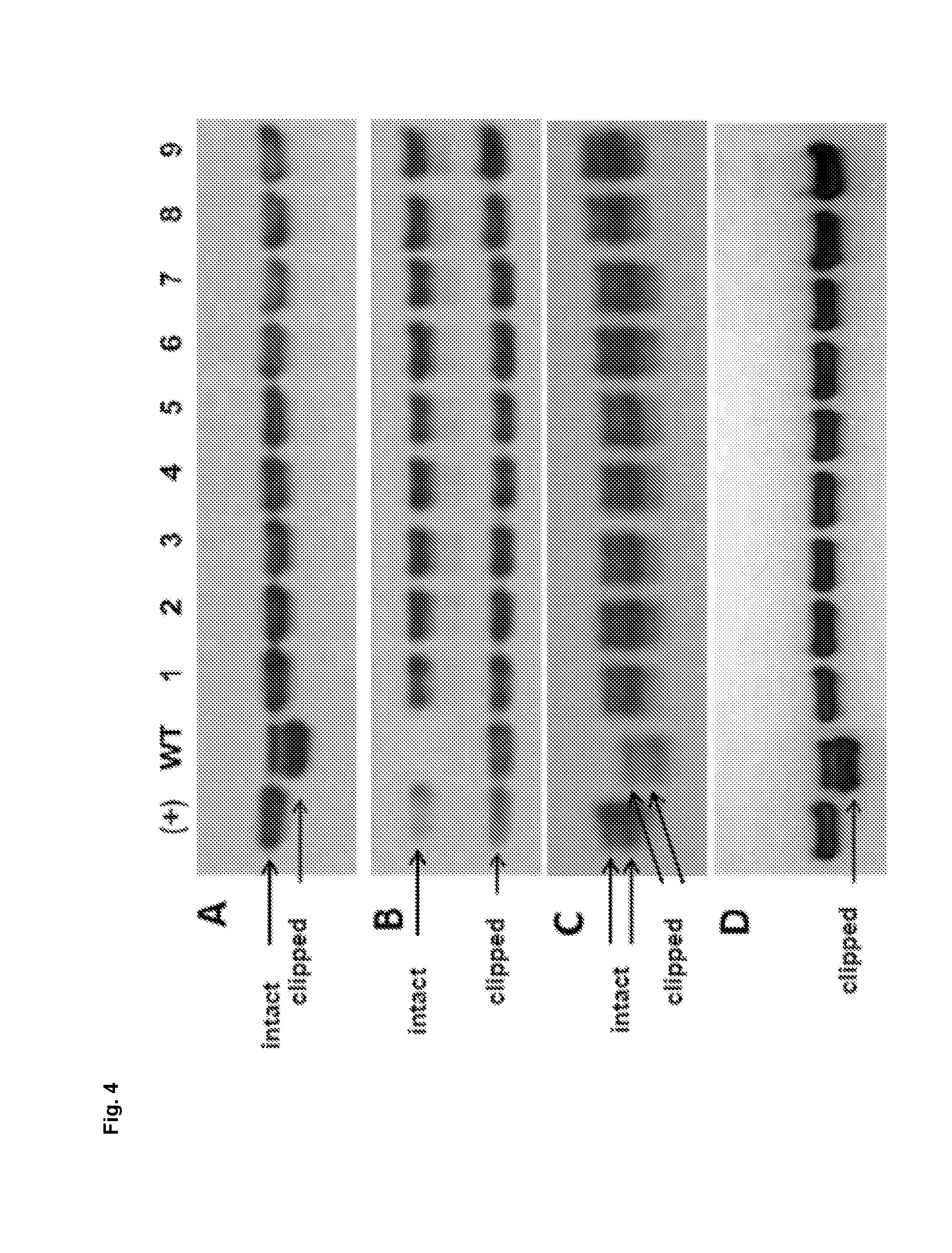Novel vertebrate cells and methods for recombinantly expressing a polypeptide of interest
a polypeptide and polypeptide technology, applied in the field of recombinant expression technologies, can solve the problems of saving time and costs, and achieve the effects of reducing or eliminating the functional expression of the matriptase gene, reducing the clipping of the secreted, and reducing the effect of matriptase
- Summary
- Abstract
- Description
- Claims
- Application Information
AI Technical Summary
Benefits of technology
Problems solved by technology
Method used
Image
Examples
example 1
II. Example 1
Clipping of Different Polypeptides of Interest when Silencing Expression of Different Proteases by RNA Interference (RNAi)
[0137]First, the proteolytic cleavage site(s) of different recombinant proteins that are prone to clipping were analyzed using different techniques including CE-SDS analysis, mass spectrometry and in silico analysis (data not shown). This analysis combined with further analyses using different protease inhibitors revealed that the majority of tested proteins that are prone to clipping are cleaved by trypsin-like proteases, which is a subfamily of the serine proteases. The RNAi experiment of example 1 was set-up to demonstrate that matriptase is the key protease responsible for clipping and that silencing of the matriptase gene significantly reduces clipping while silencing of other genes encoding different proteases does not reduce clipping of the polypeptide of interest. The siRNAs were designed against the following target mRNAs expressed in CHO ce...
example 2
III. Example 2
Matriptase Gene Knock-Out (KO) in CHO Cells Leads to a Decrease in Clipping
[0149]A. KO Performed with TALEN Technology
[0150]Nine matriptase (MT-SP1) knock-out cell clones on the basis of CHO-K1 derived cells were generated using TALEN (Transcription Activator-Like Effector Nucleases) technology. For the knockout, matriptase exon 2 was targeted on a region located before the coding region of the transmembrane domain. Exon 2 was chosen because it covers different alternative splicing variants. Adding frameshift mutations in exon 2 has the advantage that the truncated protein will be short and will be located intracellularly and furthermore, unstable and not toxic for the cells.
2.A.1. Design / Production and Use of TALENs which are Specific for Exon 2 of Matriptase
[0151]Exon 2 of matriptase and the flanking introns were sequenced in the CHO-K1 derived parental cell line (see FIG. 2, SEQ ID NO: 31).
[0152]Two truncated TAL Fokl targeting matriptase exon 2 were designed. Each ...
example 3
IV. Example 3
Recombinant Proteins are Directly Cleaved by Matriptase
[0184]In order to further demonstrate that matriptase directly cleaves recombinantly expressed and secreted proteins (clipping targets), commercially available proteases were used, namely mouse MT-SP1 and human Htra1. A monoclonal IgG antibody mAb (FIG. 7A), an Fc-fusion protein (FIG. 7B) and a further recombinant protein (FIG. 7C) were incubated for 24 h, 2 h and 1 h, respectively, with the two trypsin-like proteases mouse MT-SP1 and human Htra1, which were added to the chemically defined culture medium. Coincubation was performed at 37° C. with continuous shaking at 500 rpm. The polypeptides of interest were used at a concentration of 0.7 μM each. Each polypeptide of interest was tested with decreasing amounts of the proteases MT-SP1 and Htra1: Molar ratios of protease / polypeptide of interest from left to right are 1 / 10, 1 / 100, 1 / 1000 for MT-SP1 and ⅓, 1 / 10 and 1 / 100 for Htra1. As controls, additional samples of t...
PUM
| Property | Measurement | Unit |
|---|---|---|
| Fraction | aaaaa | aaaaa |
| Fraction | aaaaa | aaaaa |
| Fraction | aaaaa | aaaaa |
Abstract
Description
Claims
Application Information
 Login to View More
Login to View More - R&D
- Intellectual Property
- Life Sciences
- Materials
- Tech Scout
- Unparalleled Data Quality
- Higher Quality Content
- 60% Fewer Hallucinations
Browse by: Latest US Patents, China's latest patents, Technical Efficacy Thesaurus, Application Domain, Technology Topic, Popular Technical Reports.
© 2025 PatSnap. All rights reserved.Legal|Privacy policy|Modern Slavery Act Transparency Statement|Sitemap|About US| Contact US: help@patsnap.com



